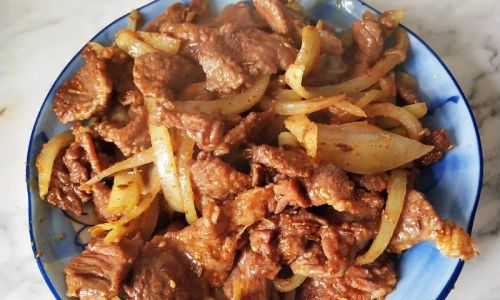Introduction
Beef cheeks, often overlooked in mainstream cuisine, are a culinary treasure waiting to be discovered. These humble cuts, taken from the facial muscles of the cow, are renowned for their robust flavor and unparalleled tenderness when cooked correctly. Despite their tough appearance, beef cheeks are rich in collagen, which transforms into gelatin during slow cooking, resulting in a melt-in-your-mouth texture that rivals premium steaks. This article will guide you through every step of preparing beef cheeks, from selecting the finest cuts to serving a dish that will impress even the most discerning palates. Whether you’re a seasoned home cook or a curious food enthusiast, this guide will equip you with the knowledge to elevate your cooking repertoire.

Understanding Beef Cheeks: A Primer
Before diving into recipes, it’s essential to grasp the anatomy and characteristics of beef cheeks. Located near the jaw, these muscles work tirelessly, resulting in a dense, fibrous texture. This very toughness, however, is their secret weapon. When subjected to low, slow heat, the collagen breaks down, creating a luxurious, silky consistency. Beef cheeks are also prized for their deep, beefy flavor, which intensifies during cooking. Unlike tenderloin or ribeye, they require patience and technique but reward the cook with a dish that feels both rustic and gourmet.
Selecting the Best Beef Cheeks
The foundation of a great dish lies in quality ingredients. When purchasing beef cheeks, seek out cuts with ample marbling—the thin veins of fat that run through the meat. These fat deposits melt during cooking, basting the meat from within and enhancing flavor. Opt for cheeks that are uniformly thick to ensure even cooking. Butchers and specialty meat shops are ideal sources, as supermarkets may not always stock this cut. If frozen, thaw them slowly in the refrigerator to preserve texture.
Preparation: Cleaning and Trimming
Proper preparation is critical to achieving perfection. Begin by rinsing the beef cheeks under cold water to remove any residual blood or impurities. Pat them dry with paper towels. Using a sharp knife, trim excess silver skin or connective tissue from the surface. While some fat is desirable, remove any thick, gristly layers that won’t render during cooking. This step ensures the meat cooks evenly and prevents chewiness.
Marinating: The Flavor Infusion
Marinating beef cheeks is optional but highly recommended for depth of flavor. A simple marinade of red wine, garlic, herbs (such as rosemary and thyme), and a touch of vinegar or citrus juice can work wonders. Place the trimmed cheeks in a non-reactive dish, cover with the marinade, and refrigerate for 6–24 hours. This process not only tenderizes the meat but also imparts aromatic notes that complement the beef’s natural richness.
Braising: The Key to Tender Perfection
Braising is the quintessential method for cooking beef cheeks. This slow-cooking technique involves searing the meat to develop a caramelized crust, then simmering it in a flavorful liquid until fork-tender. Here’s a step-by-step breakdown:
-
Searing the Meat: Heat a Dutch oven or heavy-bottomed pot over medium-high heat. Add a neutral oil (like vegetable or canola) and sear the beef cheeks on all sides until deeply browned. This step, known as the Maillard reaction, creates complex flavors essential for a rich sauce.

-
Sautéing Aromatics: Remove the meat and reduce the heat. Add diced onions, carrots, celery, and garlic to the pot, sautéing until softened and golden. This aromatic base, called a mirepoix, forms the flavor foundation of the dish.
-
Deglazing the Pan: Pour in red wine or beef stock, scraping the bottom of the pot to release the browned bits (fond). These bits are concentrated with flavor and will elevate the sauce.
-
Adding Liquid and Seasonings: Return the beef cheeks to the pot, along with additional liquid (stock, wine, or tomato puree) to submerge them halfway. Toss in herbs, peppercorns, and a bay leaf for aromatic complexity. Season lightly with salt and pepper, keeping in mind that the sauce will reduce and concentrate flavors.
-
Slow Cooking: Cover the pot and transfer it to a preheated oven (300°F/150°C) or simmer gently on the stovetop. Cook for 4–5 hours, or until the meat yields easily to a fork. Check periodically to ensure the liquid doesn’t evaporate completely, adding water if necessary.
Alternative Cooking Methods
While braising is traditional, modern kitchens offer alternatives:
- Slow Cooker: After searing, transfer all ingredients to a slow cooker and cook on low for 6–8 hours.
- Pressure Cooker: Reduce cooking time to 45–60 minutes under high pressure, followed by a natural release.
Flavor Variations: Global Inspirations
Beef cheeks’ versatility shines in global cuisines. Experiment with these profiles:

- Mexican Barbacoa: Marinate in chipotle peppers, ancho chili powder, cumin, and orange juice. Serve with corn tortillas and lime wedges.
- Italian-Style: Simmer in tomato sauce with rosemary, garlic, and red wine. Toss with pappardelle pasta and grated Parmesan.
- French Daube: Incorporate carrots, onions, garlic, and a bouquet garni. Pair with buttery mashed potatoes.
Serving Suggestions
The tender beef cheeks lend themselves to countless accompaniments:
- Creamy Polenta: The silkiness of polenta complements the meat’s richness.
- Roasted Root Vegetables: Carrots, parsnips, and beets add earthy sweetness.
- Crispy Potatoes: Smashed or roasted, they provide a textural contrast.
- Fresh Herbs: Garnish with parsley, chives, or cilantro for a burst of freshness.
Troubleshooting Common Issues
- Tough Meat: Cook longer at a lower temperature. Collagen breakdown requires time.
- Bland Flavor: Enhance the sauce with umami-rich ingredients (tomato paste, soy sauce) or a splash of vinegar.
- Greasy Sauce: Refrigerate the sauce overnight; the fat will solidify on the surface for easy removal.
Health Benefits of Beef Cheeks
Beyond their culinary appeal, beef cheeks offer nutritional perks:
- High in Protein: Essential for muscle repair and satiety.
- Collagen-Rich: Supports joint health and skin elasticity.
- Iron and Zinc: Vital minerals for immune function and energy metabolism.
Conclusion
Cooking beef cheeks is a labor of love that rewards the cook with a dish of unparalleled depth and comfort. By mastering the braising technique and experimenting with global flavors, you’ll transform this humble cut into a centerpiece that rivals any steakhouse offering. Remember, patience is your greatest ally—allow the meat to cook until it succumbs to the gentlest prod of a fork. Whether served over polenta, nestled in tacos, or paired with robust red wine, beef cheeks are a testament to the magic of slow cooking. So, embrace the process, savor the aroma, and prepare to delight in a meal that feels both timeless and triumphant.
Final Tip: Leftover beef cheeks make exceptional additions to stews, hashes, or even hearty sandwiches. Their flavor only improves with time, so don’t hesitate to cook extra. Now, arm yourself with apron and spoon—your journey to beef cheek mastery begins.





0 comments